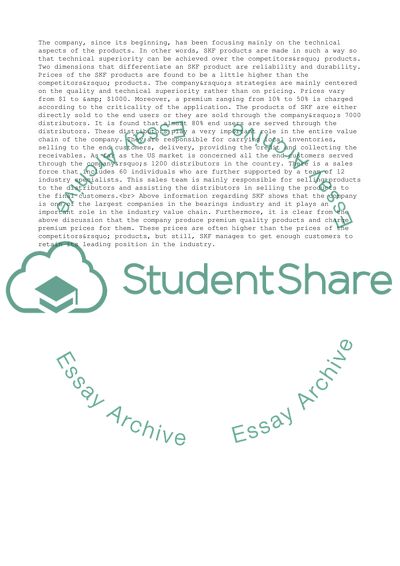Cite this document
(SKF Case - Strategic Management Research Paper Example | Topics and Well Written Essays - 2750 words, n.d.)
SKF Case - Strategic Management Research Paper Example | Topics and Well Written Essays - 2750 words. Retrieved from https://studentshare.org/management/1738057-skf-case-strategic-management
SKF Case - Strategic Management Research Paper Example | Topics and Well Written Essays - 2750 words. Retrieved from https://studentshare.org/management/1738057-skf-case-strategic-management
(SKF Case - Strategic Management Research Paper Example | Topics and Well Written Essays - 2750 Words)
SKF Case - Strategic Management Research Paper Example | Topics and Well Written Essays - 2750 Words. https://studentshare.org/management/1738057-skf-case-strategic-management.
SKF Case - Strategic Management Research Paper Example | Topics and Well Written Essays - 2750 Words. https://studentshare.org/management/1738057-skf-case-strategic-management.
“SKF Case - Strategic Management Research Paper Example | Topics and Well Written Essays - 2750 Words”, n.d. https://studentshare.org/management/1738057-skf-case-strategic-management.


